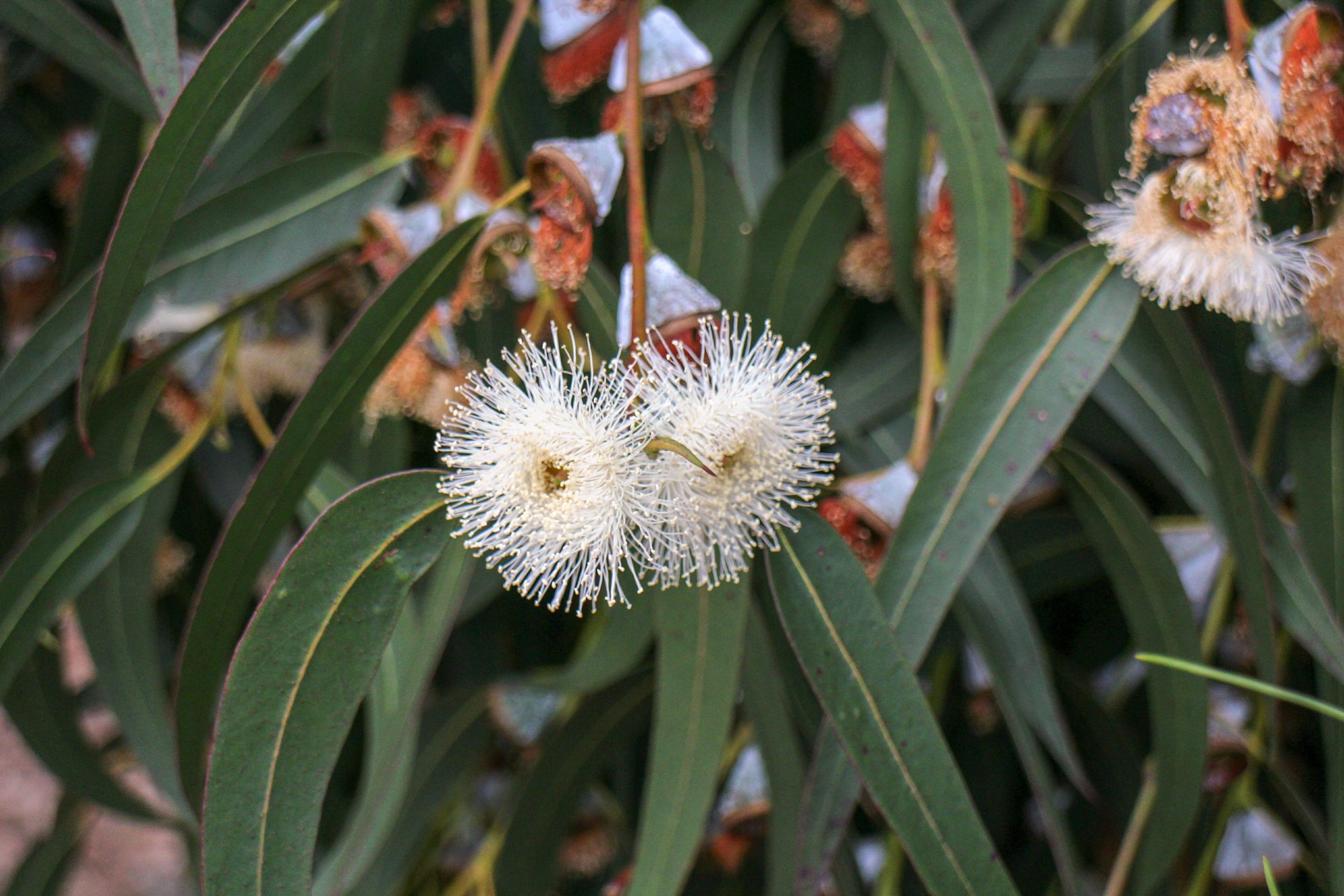Rose gum
(Eucalyptus grandis)

Description
Eucalyptus grandis, commonly known as the flooded gum or rose gum, is a tall tree with smooth bark, rough at the base fibrous or flaky, grey to grey-brown. At maturity, it reaches 50 metres (160 feet) tall, though the largest specimens can exceed 80 metres (260 feet) tall. It is found on coastal areas and sub-coastal ranges from Newcastle in New South Wales northwards to west of Daintree in Queensland, mainly on flat land and lower slopes, where it is the dominant tree of wet forests and on the margins of rainforests. Eucalyptus grandis grows as a straight and tall forest tree, reaching around 50 m (160 ft) tall, with a dbh of 1.2 to 2 m (3.9 to 6.6 ft). The biggest trees can reach 75 m (246 ft) high and 3 m (9.8 ft) dbh, the tallest recorded known as "The Grandis" near Bulahdelah, with a height of 86 m (282 ft) and a girth of 8.5 m (28 ft). The bole is straight for 2/3 to 3/4 the height of the tree. The bark is smooth and powdery, pale- or blue-grey to white in colour, with a skirt of rough brownish bark for the bottom 1–4 m (3 ft 3 in – 13 ft 1 in) of the tree trunk. The glossy dark green leaves are stalked, lanceolate to broad lanceolate, and paler on their undersides, 10 to 16 cm (3.9 to 6.3 in) long and 2–3 cm (0.79–1.18 in) wide. They are arranged alternately along the branches. The secondary veins arise off the leaf midvein at a wide angle (61 degrees), and the leaf is dotted with around 800 oil glands per square centimetre. The flower buds are arranged in leaf axils in groups of seven, nine or eleven on an unbranched peduncle 10–18 mm (0.39–0.71 in) long, the individual buds sessile or on pedicels up to 5 mm (0.20 in) long. Mature buds are oval, pear-shaped or club-shaped, green to yellow or glaucous, 6–9 mm (0.24–0.35 in) long and 4–5 mm (0.16–0.20 in) wide. The white flowers appear from mid autumn to late winter from April to August. The flowers are followed by conical, pear- or cone-shaped fruit 4–10 mm (0.16–0.39 in) long and 5–8 mm (0.20–0.31 in) wide with the valves at rim level or slightly above. The Sydney blue gum (E. saligna) is very similar in appearance and overlaps E. grandis in the southern part of its range, but has narrower leaves and more bell-shaped gumnuts with protruding valves. It also has a lignotuber. The mountain blue gum (E. deanei) can be distinguished by its entirely smooth bark and wider adult leaves.
Taxonomic tree:







